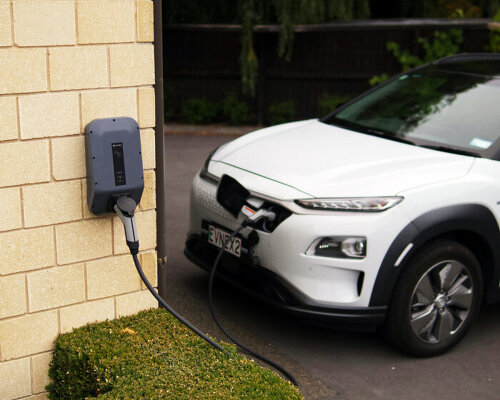Electric cars serve as power generators during outages
Can electric cars double as power generators for homes without electricity and neighborhoods experiencing blackouts and outages? In the recent announcement of Polestar, the company is using its Polestar 3 to supply energy to homes with bi-directional charging. The brand is working with the home energy company, dcbel, to make the first version of the system in California in the US. The setup comes in three main parts. Drivers bring over their Polestar 3 model next to their house. Then, they set up the home energy unit from dcbell called Ara.
The last is the software that manages the energy flow between the vehicle, house, and electrical grid, transforming the car into a power generator while parked. The company says that when the vehicle sits at home, it can send stored energy from its battery into the house and transfer it back to the grid when the grid needs support. It is how bi-directional charging works, since the battery operates in two directions, meaning it can take in electricity from the home charger. Polestar is also already preparing a second version of this project in Germany and later in other European markets, when the brand releases a home charger called Zaptec Go2.
image courtesy of Polestar, showcasing its bi-directional charging plan
Case studies of using EVs to supply temporary energy
What Polestar is doing continues the documented cases of using electric cars as power generators. Reports have stated that during the Tropical Cyclone Alfred, which struck southeast Queensland and northern New South Wales in Australia, some EV owners used the vehicle-to-load (V2L) option to power up their appliances during the blackouts. This method sends power directly from an electric car battery to external appliances using an adapter plugged into the charging port or a cabin outlet. In the news, an Ioniq 6 owner powered up their lights and major household appliances and ran a small air conditioner for six hours using only 28 percent of its battery capacity.
In Brisbane, a story shares that a family who owns an MG4 hatchback supplied energy to their appliances using their vehicle’s battery. There was also a report here where a 2013 Nissan Leaf connected a simple inverter to the electric car to turn it into a power generator and keep his and his family’s fridge running and devices charged while using roughly 10 percent of the battery capacity per day. Then, a Kia EV9 and Ford F-150 Lightning owner was able to convert his electric car’s energy into a power generator after losing grid power around his property.
image by chuttersnap | read more here
bi-directional charging can be useful for future blackouts
Other cases of using electric cars as power generators include the PG&E Pilot Program in California in 2023. The company collaborated with Ford to launch a residential pilot program in Northern and Central California and use the Ford F-150 Lightning as a reserved energy supplier. Phase 1 tested the vehicle-to-home backup power applications, with Phase 2 launching vehicle-to-grid capabilities in the second half of 2024 to let customers supply power during peak demand periods. A year later, in a 2024 study by Australian National University, 16 Nissan Leaf vehicles in Canberra provided the ‘first documented and real-world demonstration of vehicle-to-grid technology’ by responding to a grid emergency when a major storm caused Loy Yang A, a large coal-fired generator in Victoria, to fail.
The four vehicles that were actively charging immediately began discharging power into the grid, while the 12 idle vehicles activated their discharge capability on their own. These 16 EVs, then, stabilized the national grid. At the moment, only a handful of electric cars can supply energy to homes as power generators. They’re quite expensive and over time may cause battery health degradation to the vehicles. Adopting bi-directional charging, however, is rapidly being explored, and once it has scaled up, it can be helpful to neighborhoods without electricity, even those in remote areas, to turn their electric cars into temporary power generators.
electric cars can be power generators for homes using the process caled bi-directional charging
image by Mike Bird, via Pexels
image by Ed Harvey, via Pexels
project info:
name: Bi-directional charging
companies: Polestar, dcbel | @polestarcars, @dcbel.energy
cases: PG&E Pilot Program, Australian National University
The post are electric cars the next power generators for homes without electricity? appeared first on designboom | architecture & design magazine.

